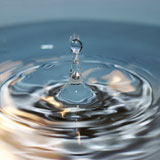Sustainable Car Washing
While you may think you save water washing your own car, commercial car washes actually conserve a lot more water. In fact, most commercial car washes use 60% less water to clean your entire car compared to only rinsing (not even cleaning) your car at home.
Commercial car washes save water because many of them use two types of recycling systems—100% closed-loop systems and partial recycle systems. Closed-loop systems recycle 100% of the water used to wash and rinse your car, and partial systems recycle only the wash water.
Besides recycling the water, commercial car washes also have absorption systems that prevent the chemical-filled water from traveling into storm drains. When you wash your car at home, the soapy water trickles into nearby drains that lead directly to lakes, rivers, and other waterways. This tainted water can then harm marine wildlife and water quality.
Although it’s best to use a commercial car wash, the following tips can help you save water and prevent chemical runoff at home.
- Use collected rainwater to wash your car. (You can save about 1,300 gallons of water during the summer by gathering and using rainwater to water plants, wash windows, and more.)
- Try your best to only use water-based, recyclable, and phosphate-free soaps.
- Instead of using a traditional hose to wash your car, use a spray gun with a trigger to save water and decrease runoff.
- Rinse your car briefly several times, instead of rinsing it once for a longer period of time. This will remove more dirt from your car and save water.
- Wash your car in a grassy area that can absorb water to avoid as much water runoff as possible.
- When you’re done washing your car, pour your water-filled buckets into your toilet or sink.
Adapted and excerpted from:
“Commercial Car Wash Recycling Systems,” Florida Department of Environmental Protection (Accessed 06/2014).
“Conserving Water,” EPA Green Building (Accessed 06/2014).
“Pressure Wash/Power Wash Discharges,” EPA (Accessed 06/2014).
“Wash your car the right way,” EPA Spring Watershed Tip (Accessed 06/2014).


